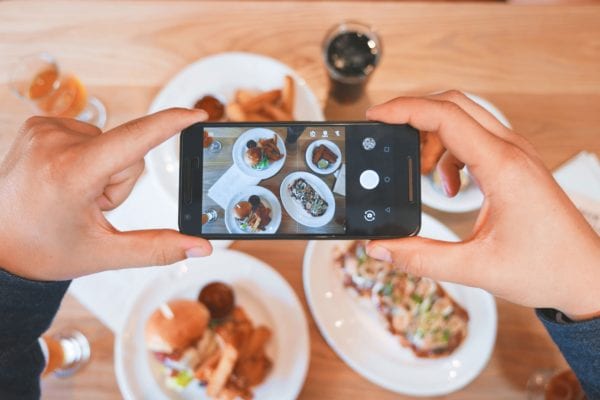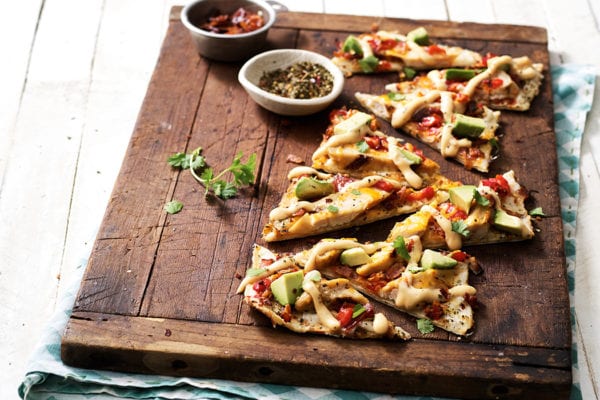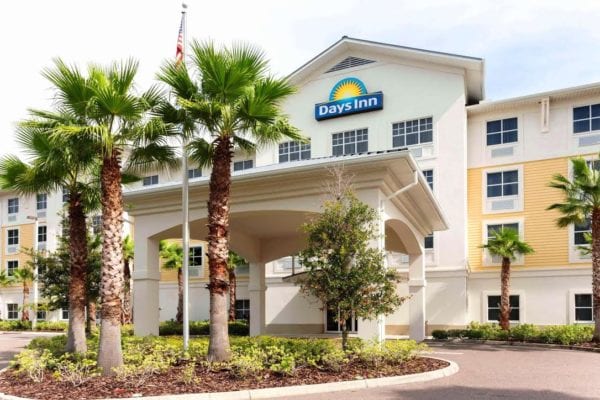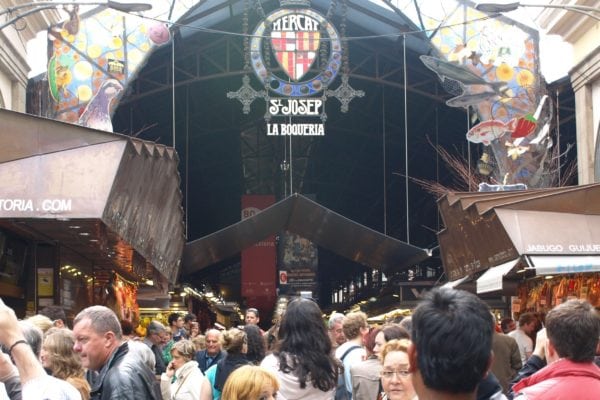Skift Take
This is a very expensive experiment that would appear to attempt to solve a problem that doesn't exist in the industry.
— Jason Clampet
On June 27, the world’s first robot-crafted burger will roll off a conveyor belt in San Francisco and into the hands of the public.
You could call it the freshest burger on Earth.
The product, from Bay Area-based Creator, a culinary robotics company, is assembled and cooked in a machine that contains 20 computers, 350 sensors, and 50 actuator mechanisms. It does everything from slicing and toasting the brioche bun to adding toppings (to order) and seasoning and cooking the patties, all in five minutes. The meat is ground to order—why it’s touted as so fresh—and sourced from premium ingredients. It emerges from the machine piled with tomatoes and lettuce, sprinkled with seasonings, and drizzled with sauces, at which point it’s transferred by human hands to the customer. The price: $6.
Formerly known as Momentum Machines, Creator was founded by entrepreneur Alex Vardakostas in 2012. The 33-year-old has assembled an Avengers-like superteam of engineers, designers, and roboticists from Apple, Tesla, NASA, and Walt Disney Imagineering R&D. The team also includes alumni from elite restaurants such as Chez Panisse, Momofuku, and SingleThread.
Vardakostas’s pitch is simple: Machines can cook burgers over a hot griddle and slice tomatoes more efficiently than a human can and don’t have the health hazard of showing up to work the grill with a cold. And then there’s the social media gold mine that a Willy Wonka-esque food machine presents. The 14-foot-long contraption, which the team refers to as a “culinary instrument” rather than robot, features glass chutes that transport buns, silos that dispense sauces, and paddles that gently push the evolving burger along.
“June 27 is a big day,” says Vardakostas. “When I started this process eight years ago, there wasn’t the inevitability that this would happen with food. Now not only is it inevitable, but it also produces a much higher quality product.”
I went to the Creator storefront, in San Francisco’s South of Market neighborhood, to sample the four burgers that will be on offer when the place opens and decide whether Creator burgers deserve to be as ubiquitous as driverless cars.
Enter the Machine
The 2,200-square-foot Creator space is spare and clean, with white-tiled walls, a poured concrete floor, and light ash wood accents. (Per Salvaag, a lead designer for BMW, consulted on the space.) It looks more like a salad bowl spot than a burger place, with only a discreet scent of griddled meat to set it apart. Even the prep stations that ready accompaniments such as skin-cut fries and seasonal grain salad are hidden behind large glass-walled refrigerators showing off the principal ingredients. Instead of a counter, the glass-walled machine is front and center. Within are a series of oversize vertical tubes with stacks of tomatoes, onions, pickles, and so on.
Lanes of brioche buns are positioned overhead. “I consider this to be the most transparent restaurant,” says Vardakostas. The one part of the burger-making process that customers won’t see is the grinding and cooking of the burger. “There was a hesitation about seeing meat being ground,” he adds.
The machine in action is a made for fast-motion video. First the brioche travels across the chute, pushed by a wooden block (and air pressure). It then shimmies down a chute as it’s sliced, toasted, and deposited in a leaf-shaped, custom-made container. Traveling along the copper-colored conveyor belt, it lands under the sauce spigots—there are around eight on offer, including barbecue, onion jam, shiitake mushroom, and ballpark mustard. Next are the sweet pickles, tomatoes, and onions—sliced to order, they land in slow motion on the bun. Shredded lettuce follows, then cheese—mild or smoked Cheddar and grated to enhance the melting potential. At the end of the line are large tubes of seasoning, including alderwood smoked salt, sprinkled on the griddled 4-ounce burger before the patty lands on the cheesed half of the bun.
The only workers you’ll see around the machine, apart from the odd employee replacing ingredients, are “concierges” at the front of the contraption to take orders and payment and a few at the end to serve the burgers.
Creator will be open for lunch on Wednesdays and Thursdays, and a limited number of diners can order via an online ticket system through August (ticket sales for August will go live on July 10). In September, Creator will open to the public.
A Multimillion-Dollar Patty
The amount of money being poured into the gourmet burger market is vast. The maker of Impossible Burger, the plant-based product that simulates meat, has raised $396 million according to techcrunch.com. Vardakostas won’t share numbers—a 2017, Business Insider story reported $18 million in financing—but he does confirm Google Ventures, Koslow Ventures, and Root Ventures are investors.
David Bordow, whose official title is culinary lead and experience designer, has led the effort to build an exceptional burger, particularly for the relatively inexpensive price. To create it, he and the consulting team Pilot R&D highlight a technique from star chef Heston Blumenthal. Every patty you’ve ever had has been assembled from haphazard strands of meat from a grinder, packed together. Creator grinds its meat vertically and keeps the strands aligned as the burger is sliced into patties. When you bite into it, you hit the seams. The resulting bite is tender and juicy (the ground-to-order factor helps too). It’s the same principle as cutting across the grain of steak rather than into it, which yields a much tougher mouthful.
Vardakostas comes from a burger background. His family owns the Southern California-based A’s Burgers, and two of his aunts have burger chains. “When you make 400 of the same burger every day, you can’t help but think, ‘How would I make this experience better?'” Like Steve Jobs, Vardakostas created the first prototype in his parents garage around 2010. When he went up to Menlo Park, Calif., to fine-tune the machine in 2012, he met Steve Frehn, a mechanical engineer with experience at NASA and Tesla Inc. who came on board. “Before 2015, people wanted to do something sexier like self-driving cars. It was more socially acceptable to say I was unemployed than to say that I was working on a burger robot,” recalls Vardakostas. “But now it’s an easy sell to get people to come on board with the idea of improving food for everyone.”
Location, Location
Creator is located at 680 Folsom St., South of Market; it’s in San Francisco’s top five priciest neighborhoods, according to statista.com. Among its neighbors are Microsoft, Salesforce.com, LinkedIn, and Yelp. The company has been there for more than two years, since early 2016, when the project got started, making the space an expensive test kitchen as the team perfected such issues as patty size and customization. “What you’re watching is a technological feat. Self-driving cars need a lot of mileage before they become reliable. You’re seeing something similar here,” says Vardakostas.
As for other expenses, the food costs are unusually high. For most restaurants, they are around 30 percent; here they’re at least 40 percent, according to some estimates. Labor costs are lower, though. There are about 40 people on the team, with about nine employees working during opening hours, estimates Vardakostas, a lower number of staffers than at a burger place. There’s also the design. Because so much of the work is done by the machine, typical burger production space is freed up for seating. “It costs about $1.5 million on average to build a McDonald’s. The machine is way less than that,” says Vardakostas. Creator has plans to roll it out into other cities (Vardakostas wants to go into urban areas that aren’t as super-affluent as San Francisco, such as Stockton, where he perceives a market for high-quality, affordable burgers) as well as venues like airport terminals, train stations, stadiums, and universities. “The machine gives us the architecture freedom to make this kind of experience all over. Doesn’t smell like burgers.”
During off hours, Creator plans to hold classes such as robotics class on micro controllers and industrial design that show off the machine’s mechanics.
The Verdict
After watching the machine do its thing (multiple times), I tried all four burgers on Creator’s opening menu. The Smoky was my favorite—it boasts the house barbecue sauce and charred onion jam, with chipotle sea salt and melted smoked cheddar on top, giving it enough smoke to live up to its name. The signature Creator vs the World burger features what the company calls Pacific sauce, Bordow’s take on Thousand Island, made with mole sauce and umeboshi plum. The burger tastes like a very good version of a classic Cali burger except one where all the ingredients pop, such as the burst of sweet pickle. I was surprised by how meaty the unremarkable looking patty tasted, seared and juicy. I would have wanted more of that sauce, which is creamy and spicy; the option to do that may or may not be available when Creator opens. Bordow has also tapped chefs Nick Balla, formerly of Bar Tartine, to create the Dad Burger (it’s got a sunflower seed tahini) and the intriguing Tumami Burger, which has a smoked oyster aioli (much tastier than it sounds) and shiitake sauce. Bordow plans to tap more local culinary talent to configure burgers after the opening.
Another thing that will be missing from the experience that starts on June 27 is the accompanying app. When that’s introduced a few months from now, it will change Creator’s burger game. The number of burger options will explode as diners customize the amount of sauce in milliliters, the amount and mix of cheeses. “Think of it. You can add an extra barbecue sauce on the top bun, habanero salt on the bottom of the patty, which has a bigger impact than the top,” says Vardakostas. “It’s where math explodes. I’m excited for people to see what different amounts of even something like seasoning can do to their burgers.”
The flow of burgers will be slow initially. The machines—there are currently two—can produce up to 120 per hour, and right now, it’s slower than that. Later, expect more to come spilling out; early word was that it could produce 400 per hour.
How does the competition feel about a robotically made burger? “I really wouldn’t have a comment,” says Randy Garutti, chief executive officer of Shake Shack, which arrives in San Francisco later this year. But Josh Capon of Bowery Meat Co., whose burger regularly wins competitions, is intrigued. “There’s a human touch and variables that are involved. We train our guys carefully on how to cook the burger. Do I trust a machine to flip my burger? I’m not sure,” he says. Yet he notes the economics of today’s restaurant business, especially in cities such as San Francisco. “With the cost of labor, it’s interesting to consider. And if the burger is cooked to order—not to mention ground to order—I’m interested, yeah.”
©2018 Bloomberg L.P.
This article was written by Kate Krader from Bloomberg and was legally licensed through the NewsCred publisher network. Please direct all licensing questions to [email protected].
![]()




